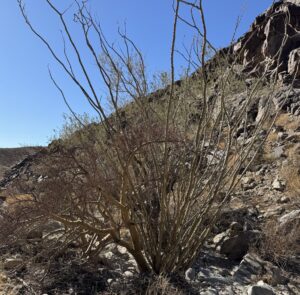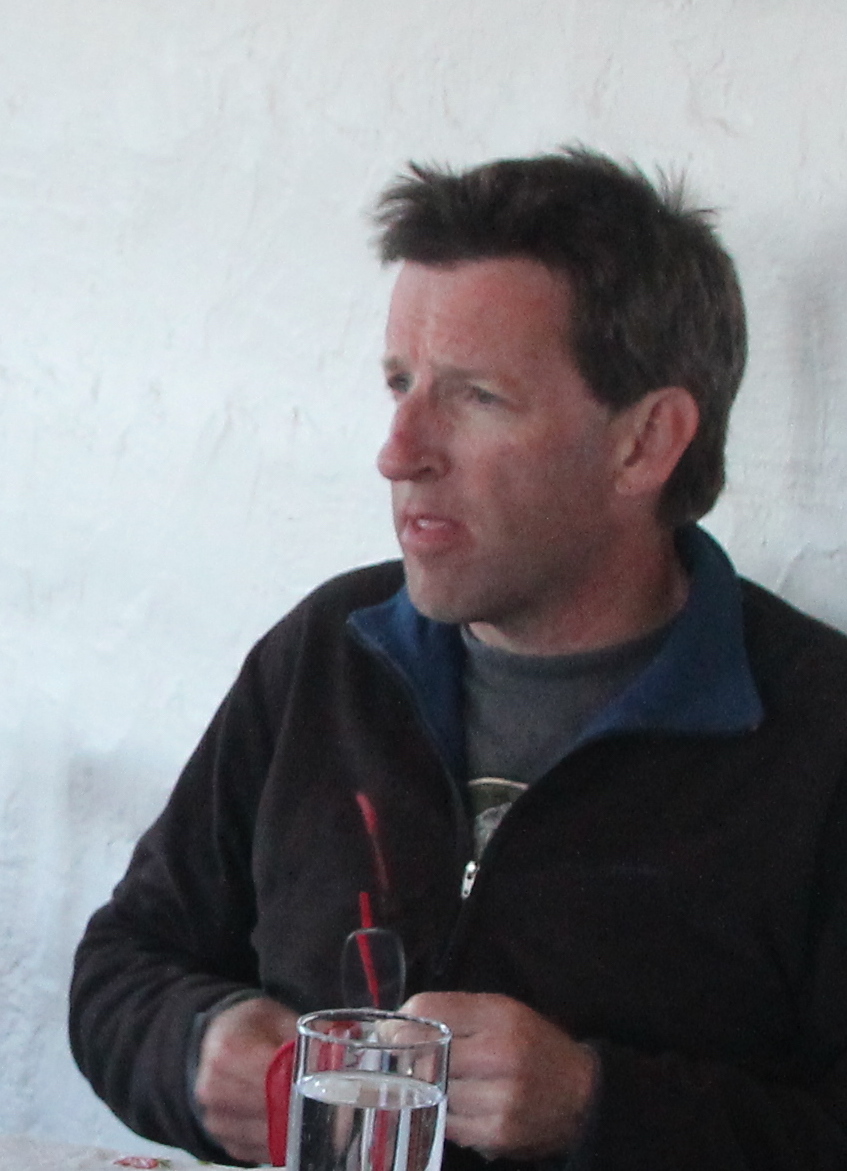
Waiting for the rain; sometimes it takes a while
Every year around midwinter I seem to find myself back down in the Sonoran Desert for a spell, if only to shake off sub-freezing temperatures and remind myself what the warmth of the sun feels like. This year, it was a several-day trip that I took to Yuma a week ago. The immediate purpose was to see in person how the midwinter production of leafy green vegetables is organized on farms there. But I had a subsidiary purpose too: to spend at least a couple of hours hiking up and down some desert hills.
This could be done, I’d learned, in the Gila Mountains just east of the city, where Interstate 8 snakes its way through a pass so tight that the road builders crossed the eastbound and westbound lanes one over another as if braiding a cord, resulting in my feeling an abrupt panic each time I am there that I have somehow become a wrong-way driver. Who ever said infrastructure is boring?
The drive to get there from Flagstaff was tedious, not because of traffic or weather or road conditions, all of which were grand, but because I insisted on punishing myself by listening most of the way to public radio with its steady drip, drip, drip of news detailing how our country’s new president was attempting to force his will on its people through a blizzard of executive orders aimed at identifying the nation’s newly designated enemies.
By the time I arrived in Yuma I’d learned that I seemed to be one of them, as I’d become one of the recipients of an e-mail ordering a team of people across the state to “cease and desist” working on a federally funded project, well under way already, to promote climate-smart practices in farming.
This of course came not only in the early phase of a presidential transition, but in the middle phase of what is shaping up to be a record dry winter, precursor to what is likely to be a scarily hot and dry summer. So by the time I set out to hike the next morning I was feeling about as prickly as the teddy-bear chollas that dotted the sparsely vegetated slopes. Every human encounter I’d had along the way had seemed fraught: who was in favor of Trump’s sledgehammer approach to governance? Who was against it? Who was not paying any attention at all? Who was feeling the burden of climate breakdown? Who was blithely ignoring it? It was mostly impossible to tell. And so I needed the hike for reasons as much mental as physical.
The trail I’d chosen from afar soon proved itself to be a poor choice for a day on which I was hiking alone, and on a tight schedule: navigating it as often meant scrambling among slope-perched boulders as actual walking, and as I rose in elevation I could see that if I continued I was committed to walking an entire circuit around a circle of rugged peaks, which would take more time to navigate than I had.
So I did what I hate to do, namely bail.
But I decided to do so by doing another thing a solo hiker isn’t supposed to do, namely go off trail—an option ill-advised enough that my AllTrails app started beeping at me in alarm before too long. Because what I decided to do was to descend straight down into a wash that I could see ended up at the parking lot.
This in itself was a scrambly, sketchy way to go, steep enough that not long after I began I knew I had committed myself to it for better or worse. But after 15 or 20 minutes of sidehill stepping and sliding I was down on less vertiginous terrain, and was pleased to find something I hadn’t seen up above: namely, trees. Growing out of the rocky wash bottom were dun-colored ironwood trees, some with thick old-growth trunks, and a few paloverde trees, and, best of all, some of the largest elephant trees I’d ever seen.
Elephant trees are related to the Old World frankincense and myrrh, and they are beautiful plants, their wood gnarled and tumescent, their bark papery, their leaves intricate puzzles of tiny green leaflets. Their smell is intoxicating, like a combination of turpentine and nectar. Most of the elephant “trees” I’d seen before were more like shrubs in stature, but these were unmistakably trees, well over twice my height, protected in these tangled mountains from frost, and nourished by the rare downpours that dowse the southwest Arizona desert, sometimes in winter storms, sometimes when remnant Pacific hurricanes stray north in late summer.
I continued down the wash, and before too long found a trail that eventually wound its way back to the parking lot. From there, there was no sign of the hidden trees. Here the low rounded hills were comprised mainly of stony desert pavement, with the scattered creosote shrubs maintaining antisocial distances between themselves.
Some other winter, I knew, even these barren-looking expanses would run riot with tangles of poppies and filaree and owl’s-clover and the other desert wildflowers that have learned to engage in that vital desert skill, namely waiting for a good time to emerge and seed the next generation.
And this proved to be what my hike had been for: to remember that in the desert it can seem like the desiccating dryness imposed from above can seem like the only show that matters—but it’s not. There is, instead, ancient wisdom about how to survive tucked back in the folds and hollows that aren’t visible when you’re speeding by on the interstate. And the vast expanses in between, the ones that look so lifeless, can rise up into an overwhelming torrent of life when conditions are right.
When I drove back home it was with that certitude in mind, and with a question about what it will take for that drive to seed a viable future to take hold in the human communities I was speeding by.

